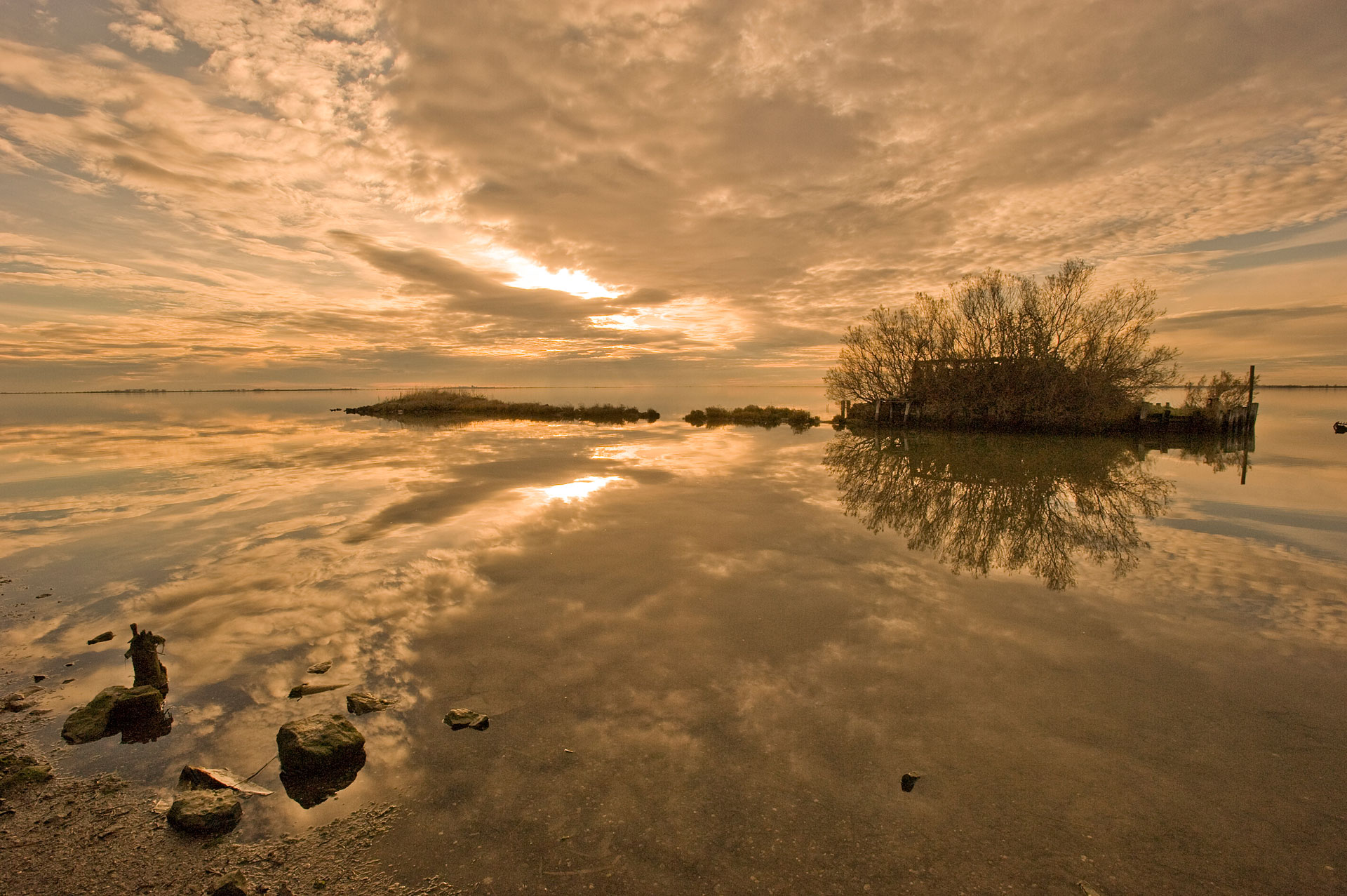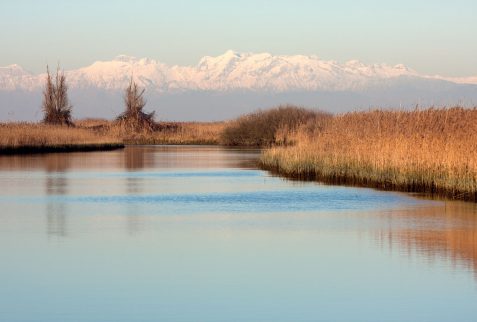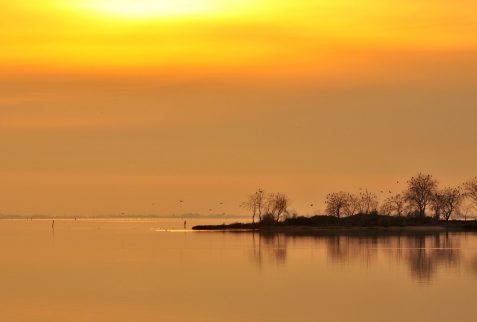The morphology of the lagoon
Text by Glauco Vicario.
An extraordinary area between the land and the sea, Marano’s lagoon, together with the lagoon in Grado, is the most northern lagoon area of the Adriatic.
A wonderful stretch of salt water between the Friuli plain and the Adriatic sea, created over thousands of years by the sea level slowly but continuously rising and by the significant earth deposits from the rivers.
The lagoon is closed off from the sea by a broken strip of coastline made up of islands and sandbanks that are more or less persistent. Lagoon openings (or harbour mouths), broken sections along the sandy coastline, allow for the flow of the tides to pass through, thereby changing the water between the sea and the lagoon. The tidal range here is very strong, the highest in the Mediterranean basin, with fluctuations ranging between an average of 70 centimetres and a maximum of over a metre.
From a morphological point of view, the lagoon environment can be divided into three areas:
- the first includes the area above the average level of the high tides: the coastal strip, coasts and salt marshes;
- the second is made up of the areas between the average level of the low tides and the high tides: tidal flats or mudflats;
- the third includes the areas below the average level of the low tides: the main canals, lagoon openings and marshes.
Various rivers flow into the lagoon, bringing a considerable amount of fresh water to the area. This plays a decisive role in altering the chemical-physical characteristics of the water and the hydrology of the basin. What’s more, the tributaries that flow into the lagoon come from springs and are therefore characterised by minimum transport of solids and by a constant inflow of water. The total average capacity in low-flow periods is approximately 100 mc/sec, over half of which comes from the Stella river alone.
The relationship between the fresh water from the rivers and the salted sea water varies over time, creating significant fluctuations in temperature and levels of salinity. This is the reason for the exceptional productivity of this environment. Thanks to its copious flow of water, the Stella river, in particular, affects the temperature and salinity of the water in the vast area of lagoon in front of its mouth.



